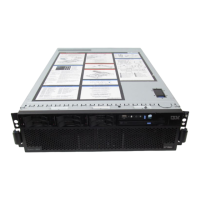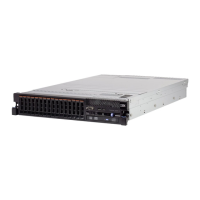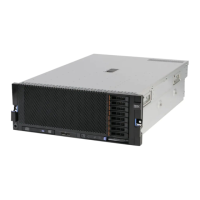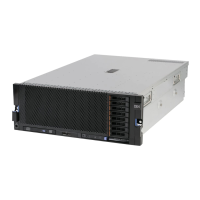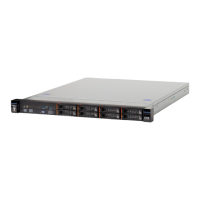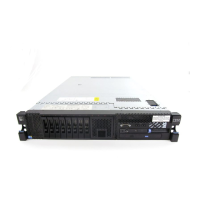Chapter 7. IBM System x3690 X5 307
Any memory installed on the optional mezzanine board will not be seen by processor 1
when processor 2 is not installed or operational.
For nonuniform memory access (NUMA)-aware OSs, when two processors are installed,
you must install the same amount of memory on both the system board and the
mezzanine. See Table 4-9 on page 136 for details.
The best processor performance can be achieved when memory is installed to support
Hemisphere Mode. When the mezzanine is not installed and both processors are installed,
it is possible to have processor 1 in Hemisphere Mode and not processor 2. In this type of
installation, having processor 1 in Hemisphere Mode will improve the memory access
latency for both processors. To determine the DIMM population for Hemisphere Mode
without the mezzanine board installed, see Table 4-9 on page 136.
Consider installing all DIMMs of the same field-replaceable unit (FRU) to avoid conflicts
that might prevent NUMA compliance or support Hemisphere Mode. The problems are
most likely to occur when various-sized DIMMs are installed. The server supports
various-sized DIMMs installed in each rank, but the configuration becomes complex and
difficult to maintain. Although OSs that depend on NUMA compliance will inform you when
the server is not NUMA compliant, there is nothing to inform you when the processors are
not in Hemisphere Mode.
It is better to install more smaller DIMMs than fewer larger DIMMs to ensure that all of the
memory channels and buffers of each processor have access to the same amount of
memory. This approach allows the processors to fully use their interleave algorithms to
access memory faster by spreading it over multiple paths.
7.3.2 Testing the memory DIMMs
The best practice when installing memory is to run a memory quick test in diagnostics to
ensure that all of the memory is functional. Memory might not be functional for the following
reasons:
Wrong DIMM for the type of server that you have. Ensure that only IBM-approved DIMMs
are installed in your server.
The DIMM is not fully installed. Ensure that the DIMM clips are in the locked position to
prevent the DIMM from pulling out of its slot.
The DIMM configuration is invalid. See the DIMM placement tables in “x3690 X5 memory
population order” on page 133 for details.
A possible bad DIMM, failed DIMM slot, bent processor pin, or resource conflict with a
PCIe adapter. Swap the DIMM with a functional DIMM, reactivate the DIMM in F1-Setup,
and retest:
– When the problem follows the DIMM, replace the DIMM.
– When the problem stays with the memory slot location, remove any non-IBM PCIe
adapters, reactivate, and retest.
– When the failed slot is on the mezzanine memory board, verify that the memory board
is completely seated, reactivate, and retest.
– Contact IBM support for parts replacement.
Use the built-in server diagnostics to test the installed memory. Use the following steps to
perform a simple test of a new memory configuration before placing the server into
production:
1. During POST, at the IBM System x splash panel, press F2-Diagnostics as shown in
Figure 7-5 on page 308.
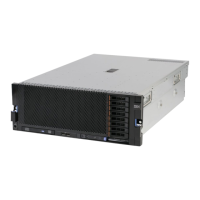
